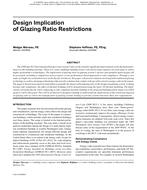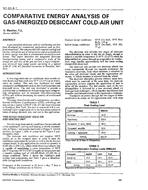Teaching the design of thermal systems requires an integrated approach that treats subjects such as thermodynamics, fluid mechanics, and heat transfer as parts of one interconnected area, in which appropriate solutions to real-life design and analysis problems can be obtained only when all these aspects are considered simultaneously. This approach must be implemented through open-ended homework problems and design project-oriented teaching. Topics related to HVAC and other thermal systems that must be addressed include fluid flow networks, heat exchanger design, design and selection of pumps, fans and compressors, heat recovery systems, psychrometrics, air-conditioning systems, electronic cooling systems, fuels and combustion, solar thermal systems, and power plant design. A course that teaches the design of such systems and the wide array of thermal science applications is described in this paper. The course is specifically designed to allay the fear of ill-defined problems by teaching the skills to model and translate a physical situation into the relevant equations (rather than simply solving well-stated parts of a problem). The use of equation-solving software facilitates the implementation of this focus by reducing the effort involved in solving equations and affording the opportunity for more discourse on the approach toward modeling of thermal systems. The specific software used for this course, which has thermodynamic and thermophysical properties of a wide variety of fluids built in and simplifies iterative calculations significantly, also facilitates the teaching of interactions between components in systems without the tedium involved in iterations and finding fluid properties. This allows the student to concentrate on the interpretation of results and trends, rather than simply reporting the numerical results. The software is not a “dumb-solver” or a spoon-feeding convenience because the students have to input every equation describing the governing processes based on their understanding of the physical problem. Thus, it offers convenience but does not provide a crutch or a substitute for the understanding of thermal phenomena, and it can be implemented as a common platform on a curriculum-wide basis for teaching most thermal sciences courses. The student also learns the effect of individual component design on overall systems through parametric optimization studies and economic analyses. The projects described in the paper are contributing directly to product development in industry, while providing the students experience in practical thermal design. This software-assisted course is providing to the HVAC industry a well-prepared body of engineers essential for the contin-ued investigation of thermal processes and the advancement of innovative technology.
Units: Dual
Citation: Symposium, ASHRAE Transactions, vol. 105, pt. 1
Product Details
- Published:
- 1999
- Number of Pages:
- 10
- File Size:
- 1 file , 470 KB
- Product Code(s):
- D-7604


